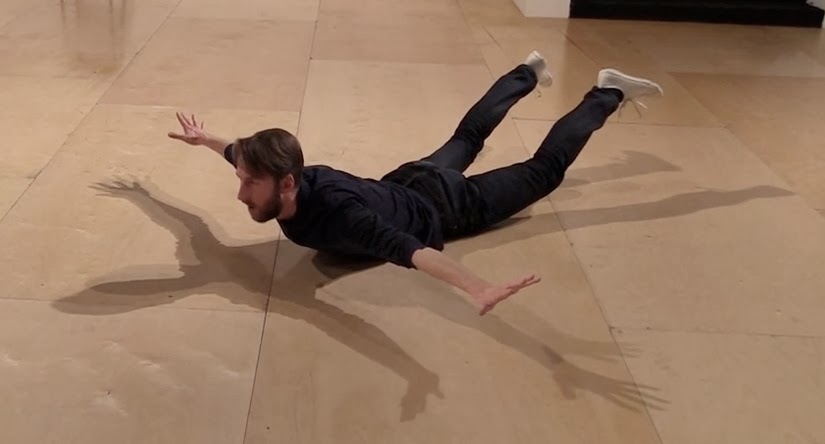14/01/14
Siobhan Davies Dance: Table of Contents, a
live installation
ICA
8 – 19 January 2014
Siobhan Davies is an award-winning British dancer and
choreographer with a particular interest in the concept of how one might
archive dance and other performance art. To welcome in the new year, she has
collaborated with the ICA and five dance artists to produce an innovative and
boundary breaking part-improvised performance – or, as the gallery is billing
it, a live installation – which will run for seven hours a day, from 8 – 19
January.

Walking into the studio is like walking into the middle of a
dance rehearsal. One or two or three performers at a time are dancing, often
speaking aloud, discussing what they are doing, where they are going, what they
are sensing. Some address the audience directly, employing props to offer an
impromptu anatomy lesson or, in the words and acts of Finnish collaborator Helka
Kaski, to give the heart “its public debut”.

Nimble, agile and seemingly weightless, the performers move
hither and thither, following unprescribed paths, wearing everyday clothes, and
blending and interacting with the audience in a manner similar to Turner Prize
nominee Tino Sehgal. Andrea Buckley and Charlie Morrissey, working together,
become symbiotic in their motion. First he lifts her, then she him, carrying
him across the floor space, before placing him down on a handily positioned
stool, recently vacated by an audience member, all the while chattering about
what she is doing, what she remembers from their last dance together, and how
she is glad to take a quick breather: “It’s really great when Charlie
cooperates,” she laughs. “It doesn’t always happen!”
A kind of slow motion gymnast, Matthias Sperling creeps from
one end of the room to the other without touching the ground. Using eight
upturned plastic cups, he carries out a Twister-esque game of criss-crossing
his limbs like a confused octopus. At the same time, across the room, Rachel
Krische gestures wildly, face expressive as a mime artist, smiling
encouragingly and asking audience members to help her out by repeating words
heard on a headphone set or listening to the recording of a conversation with
Siobhan Davies about the evolution of dance.

The soundtrack is created by the voices of the artists,
their heavy breathing, the gentle padding of their feet, and the scraping of
chairs and cups across the floor. Some audience members laugh or chat to one
another, alternately bemused and amused. At points, however, they are
transfixed, waiting to find out what will happen next. At intervals, everyone
in the room is invited to gather around some large wooden tables, moved about
between “sets”, where the artists about to take to the stage will mark out
their dance space and set out their proposals.
In his piece, For Now,
Sperling performs moves from what he calls the Siobhan Davies archive –
elements from other dancers and choreographers, as well as from previous works
of his own – all the time questioning their relevance for the performance at
hand, as if selecting images from an archive to compose on a story board, the
picture grows and flows. Reperformance brings the art back to life and, of
course, offers an answer to the thesis or starting point brought to the table
by Davies: how can an ephemeral and live art form be preserved for posterity?
Well, through photography and reperformance, written description and film. The
dance artists in this installation do their part, and this short film is Studio
International’s contribution to the archive.
To watch the video review of this, please go to: http://www.studiointernational.com/index.php/table-of-contents-a-live-installation